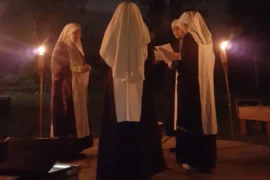Not Sure Where to Start?
Discover what works best for your body and lifestyle—whether you’re exploring for the first time or coming back for your favorites, we’ve got you covered.
Before January 1 became the official start of the year, many cultures—including medieval Europe under the Julian Calendar—celebrated March 25 as New Year’s Day. Although the Roman Catholic church made this a holy day eventually, the tradition predates Christianity.
Ancient cultures celebrated the spring equinox (around March 21) as the New Year due to its alignment with themes of rebirth, renewal, and the start of the agricultural season. March 25th would land then in a traditional festival period that would last a week long.
The Romans marked March 25 as part of their celebrations for Cybele and Attis, deities associated with death and resurrection. These traditions gave March 25 both practical and symbolic importance long before the Church adopted it.
With the new year beginning nearly three whole months into the calendar year, the situation created peculiarities in timekeeping. The calendar year flipped on March 25, meaning dates between January 1 and March 24 belonged to the “old year.” Documents from this period often bear dual dates (e.g., March 10, 1599/1600), a charmingly chaotic solution to the problem of measuring time.
In Ancient Times
3000 BCE to 753 BCE (the founding of Rome) celebrates March 25th as week or ten day-long celebration of the Spring Equinox. Cultures worldwide, including Mesopotamians, Egyptians, and later early Europeans, celebrated the spring equinox. These festivals marked themes of fertility, renewal, and agricultural beginnings, aligning with the natural rhythms of the year.
753 BCE to 476 CE (the traditional end of the Western Roman Empire) celebrates March 25th as the feast of Hilaria, honoring the goddess Cybele and her consort, Attis. These celebrations were rooted in themes of death, rebirth, and the renewal of life, consistent with spring’s symbolic significance.
Fourth Century – 325 CE to 400 CE, the church codifies March 25th as the Feast of the Annunciation. The formalization occurred after the Council of Nicaea in 325 CE, as the Church began to standardize its liturgical calendar. By the late 4th century, March 25 was established as the Feast of the Annunciation, aligning with theological narratives of Christ’s conception and themes of creation and redemption.
January 1: The “New” New Year
The shift to January 1 as the day to celebrate a new year, didn’t happen overnight. It began with the Gregorian Calendar reform of 1582, introduced by Pope Gregory XIII to correct inaccuracies in the Julian Calendar. The Julian system had accumulated a 10-day discrepancy over centuries, causing seasonal drift. The Gregorian reform aimed to realign the calendar with the solar year and standardize Easter’s date.
Catholic countries, such as Spain and Italy, adopted January 1 as the start of the year immediately. For the Romans, January 1 had already been significant as the Feast of Janus, the god of beginnings and transitions. The symbolic connection made it a natural choice for the new year. By the time of the reform, the practicality of aligning timekeeping with administrative cycles further cemented January 1’s importance.
Protestant nations resisted the Gregorian calendar, but seventeen years later in 1599, King James VI of Scotland decreed January 1 as New Year’s Day, aligning Scotland with other ‘well-governit commonwealths’.
It would be another 153 years before England gave in. It was 1752 when England finally adopted both the Gregorian Calendar and January 1 as the official New Year.
Not Sure Where to Start?
Discover what works best for your body and lifestyle—whether you’re exploring for the first time or coming back for your favorites, we’ve got you covered.
The Catholic Church Adopted March 25 as the Feast of the Annunciation
March 25th aligns with older traditions celebrating the spring equinox and themes of renewal and creation, which is likely the reason it became a significant Christian feast. The Feast of the Annunciation was celebrated as early as the 4th to 5th century CE in the Eastern Church and became widespread in the Western Church by the 7th century. It was formally included in the liturgical calendar of the Western Church by the Council of Toledo in 656 CE.
The Catholic church decided to make this date (approximately 9 months from Christmas), the day Mary said ‘yes’ to the angel Gabriel, marking the Incarnation—the moment that Jesus’ life began.
January 1 becomes the Solemnity of Mary
The celebration of Mary as Theotokos (God-bearer) was affirmed at the Council of Ephesus in 431 CE, a significant moment for Mariology. However, January 1 as the specific feast day for Mary’s maternal role was formalized in the liturgical calendar much later, after Vatican II in 1970.
Historical Evolution: Previously, January 1 was primarily celebrated as the Feast of the Circumcision of Jesus in the Western Church, reflecting Jewish traditions. The redefinition to honor Mary emphasized her role in the Incarnation, aligning with the Octave of Christmas.
The Church honors Mary’s role as Theotokos (God-bearer) on January 1, tying the new year to her maternal protection and the Incarnation’s unfolding mystery. As the Octave of Christmas, it is a universal Holy Day of Obligation, inviting Catholics to begin the year with reflection and celebration.

It Was Not a Smooth Transition
The transition from March 25 to January 1, and the adoption of the Gregorian calendar, was anything but smooth. Along the way, humanity encountered delightful and sometimes absurd complications in its quest to align with the solar year. Here are some of the most memorable calendar mishaps:
- Lost Days in 1752: England’s Riots Over Shortened Lives
When England and its colonies finally adopted the Gregorian calendar in 1752, eleven days were “skipped” to bring the calendar in line with Europe. September 2 was immediately followed by September 14.
Many people, confused by the change, believed their lives had been shortened. Riots broke out in parts of England with chants of “Give us our 11 days back!” This upheaval reflected the deep skepticism of ordinary people toward what seemed like an arbitrary and authoritarian imposition by the government and the Church. - Double Leap Years and Sweden’s February 30, 1712
Sweden’s gradual approach to calendar reform resulted in one of the most unique calendar mishaps. Initially, Sweden planned to transition from the Julian to the Gregorian calendar by omitting leap days over 40 years. However, the plan was inconsistently implemented (they simply forgot to do it again after the first year) and in 1712, Sweden added an extra leap day to correct earlier mistakes. This created the date February 30, 1712—a day that exists in no other calendar.
1700: Sweden made the initial decision to begin the transition. The plan was to omit all leap days over a 40-year period, gradually aligning the calendar with the Gregorian system by 1740.
1704 and 1708: Sweden failed to omit leap days as planned. This inconsistency undermined the transition plan, leaving the calendar in a hybrid state that was neither Julian nor Gregorian.
1712: To resolve the confusion, Sweden abandoned the transition plan and reverted to the Julian calendar. They added an extra leap day that year, creating the unique date February 30, 1712. - Russia’s Late Arrival and Olympic Confusion
Russia resisted adopting the Gregorian calendar until the Bolshevik government mandated the change in 1918. This delay caused comedic chaos on the international stage. For example, Russian athletes arrived twelve days late to the 1908 Olympics in London because they were still using the Julian calendar.
The transition in 1918 also shifted everyday life abruptly, with January 31 being followed directly by February 14. - The October Revolution That Happened in November
During the October Revolution of 1917, Russia was still using the Julian calendar, which was thirteen days behind the Gregorian calendar in use by much of the Western world at that time. So, it was October in Russia and the world calls that event the October Revolution, even though it was only October in Russia and a few other places. It occurred on November 7th by the Gregorian calendar. - April Fools’ Day
April Fools’ Day originates in France’s adoption of the Gregorian calendar in 1582. The New Year moved to January 1, but many people continued celebrating it during the period traditional for celebrating the new year: March 21st to April 1st, the period of the old Julian calendar’s New Year celebrations. These individuals were mocked as ‘April fools’, giving rise to a tradition of pranks.

Reflecting from Our Current Viewpoint
The evolution of the calendar reminds us that time is as much a human construct as it is a natural reality. Our ancestors’ attempts to align timekeeping with religious, agricultural, and administrative needs often resulted in delightful chaos. It is also quite possible that our Beguine ancestors just continued to let the moon guide their days, and they ignored the calendar politics of the times.
With all of us being globally connected, today we rather consider time to be fixed and measurable – universal and practical — but it wasn’t always so. The journey of how the calendar we use today came to be is marked by quirky transitions, political intrigue, and deeply rooted traditions. The dates we take for granted—January 1 as the start of the year, March 25 as a footnote in history—were once much more contentious and meaningful. This new year, if you have trouble finding blessings, you can be grateful that we don’t have to deal with political debates over calendar changes or skipped calendar days, as there is quite enough chaos in the world as it is.

Not Sure Where to Start?
Discover what works best for your body and lifestyle—whether you’re exploring for the first time or coming back for your favorites, we’ve got you covered.










Comments are closed.